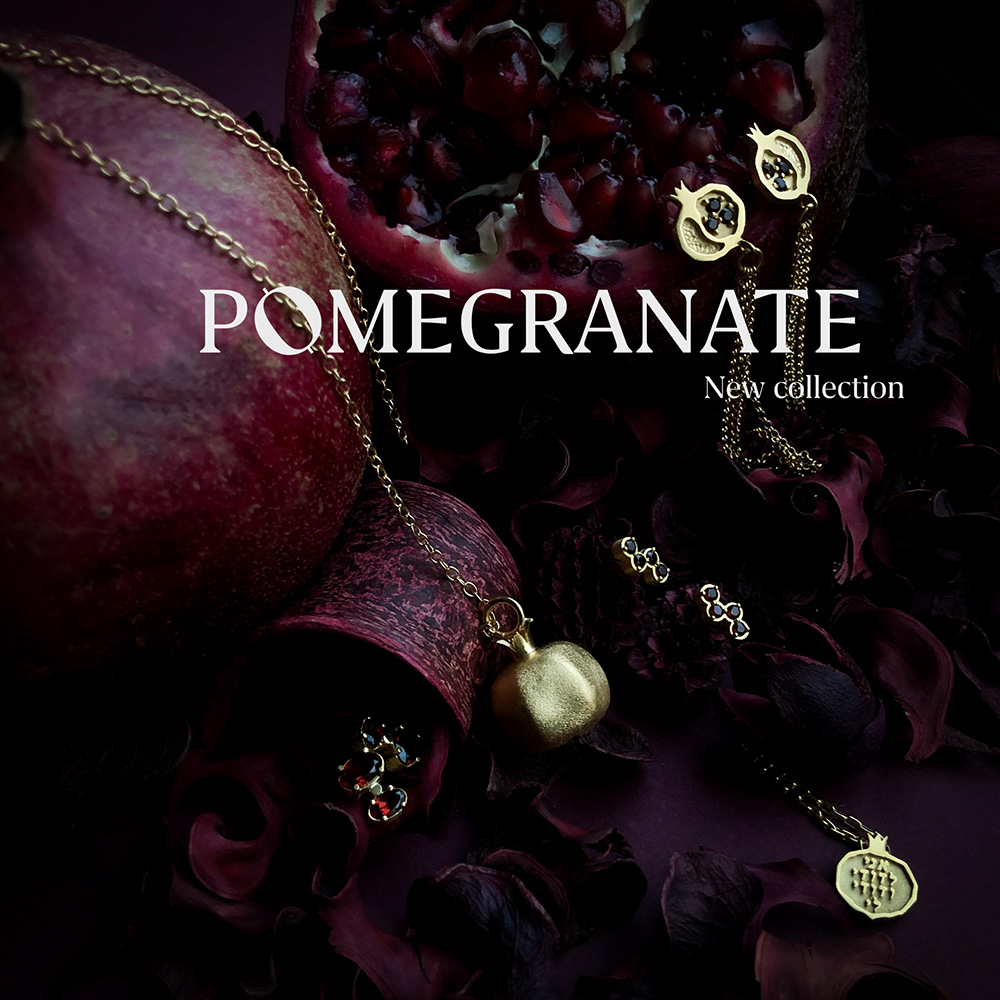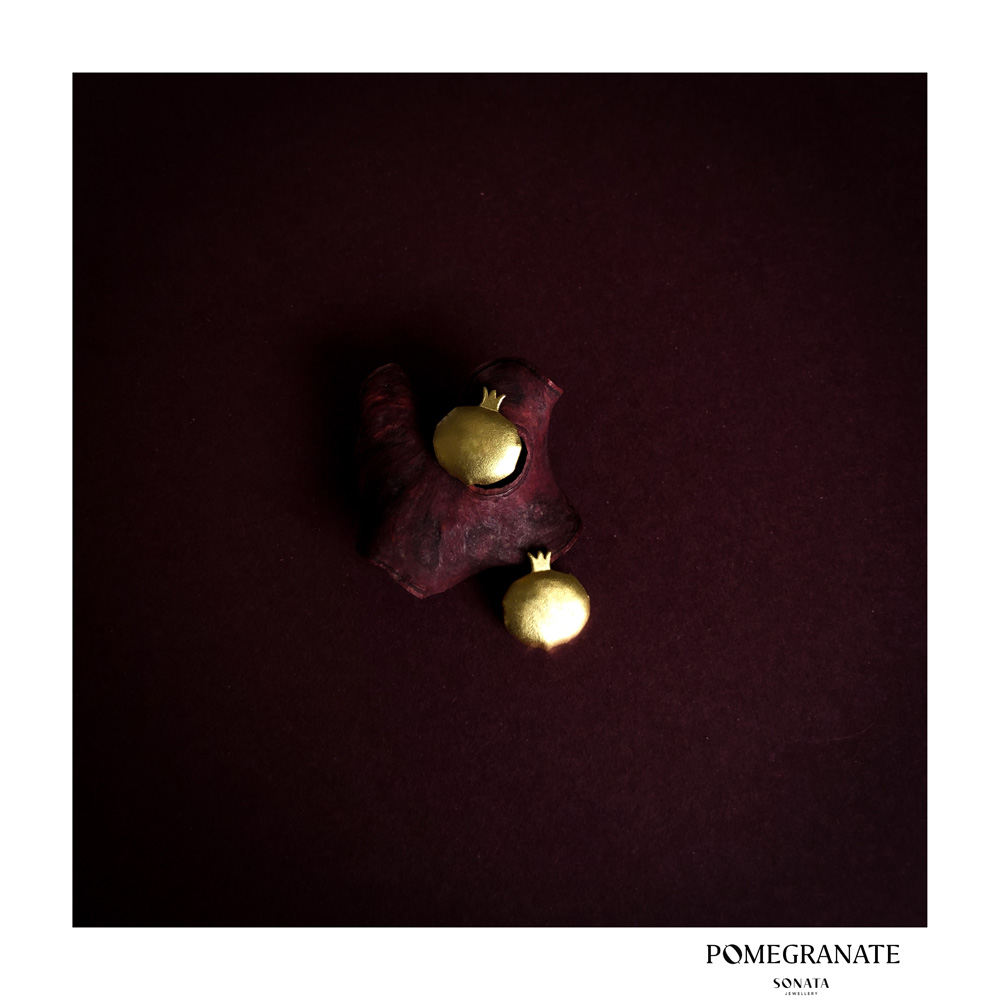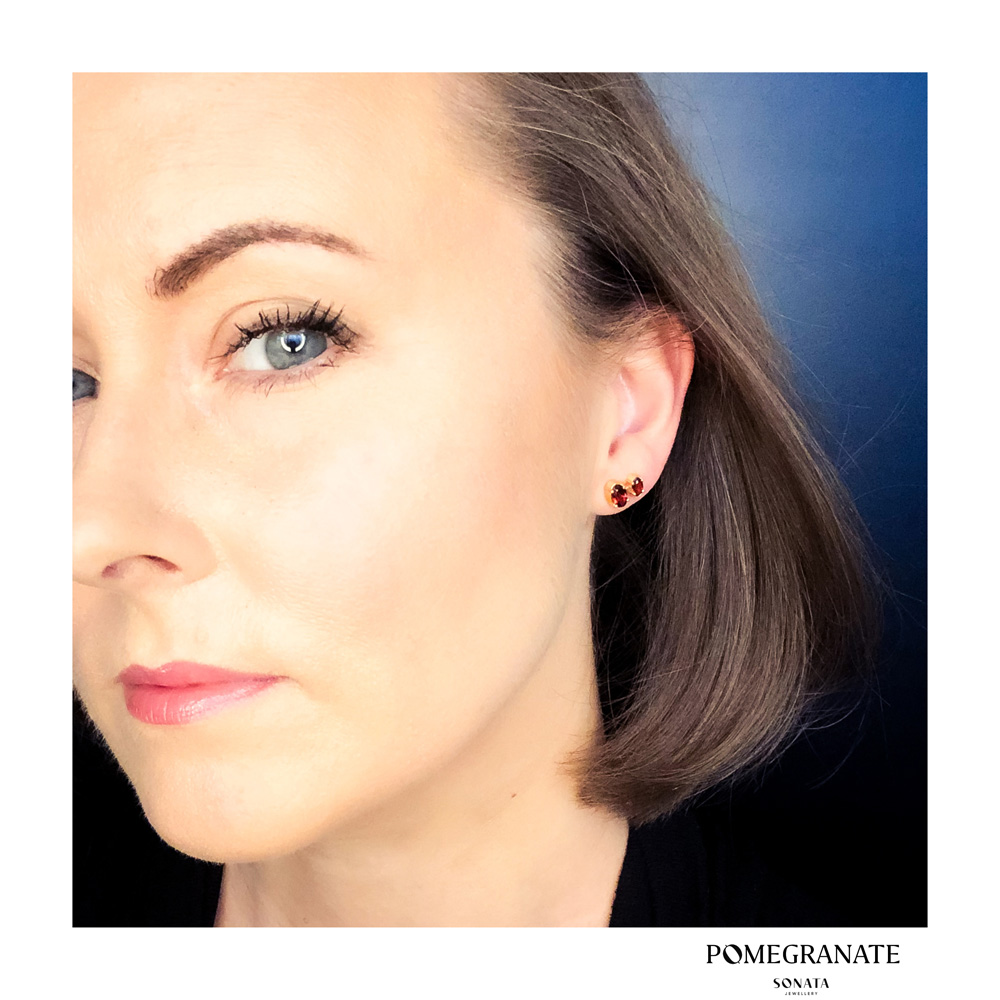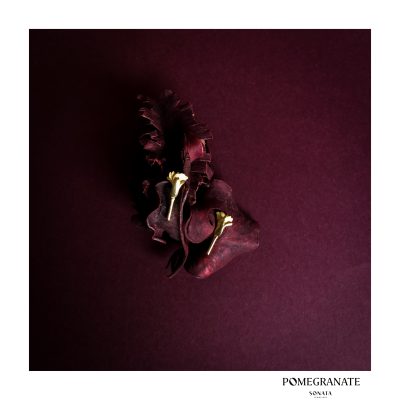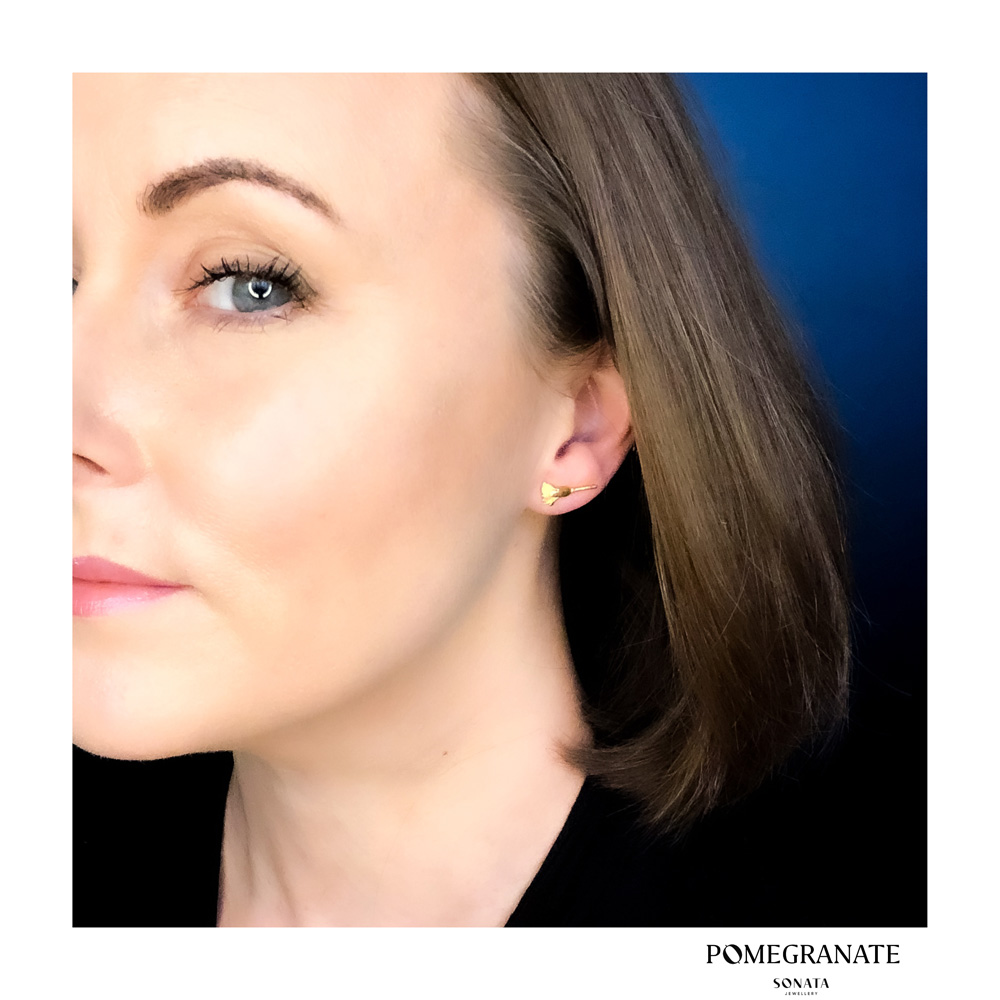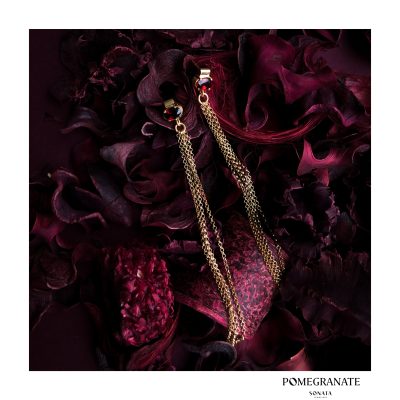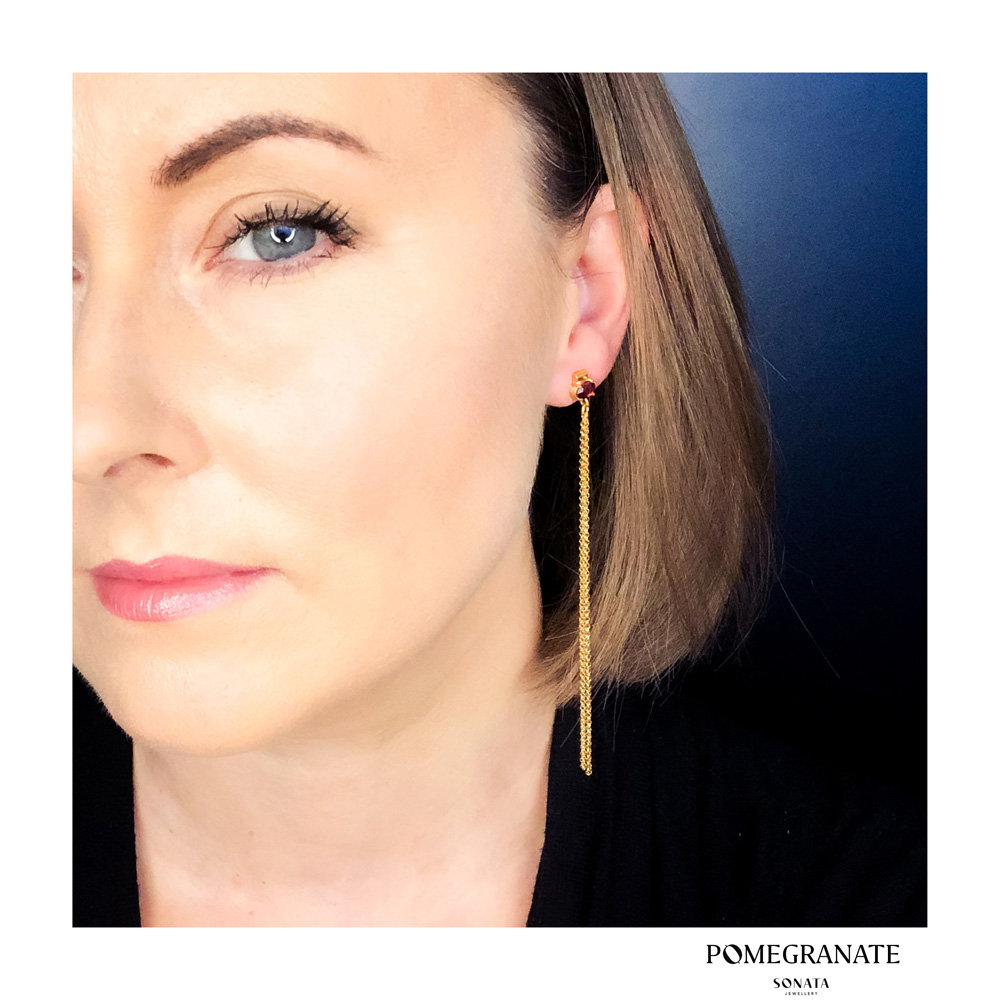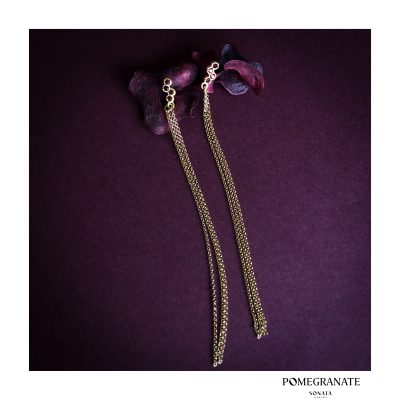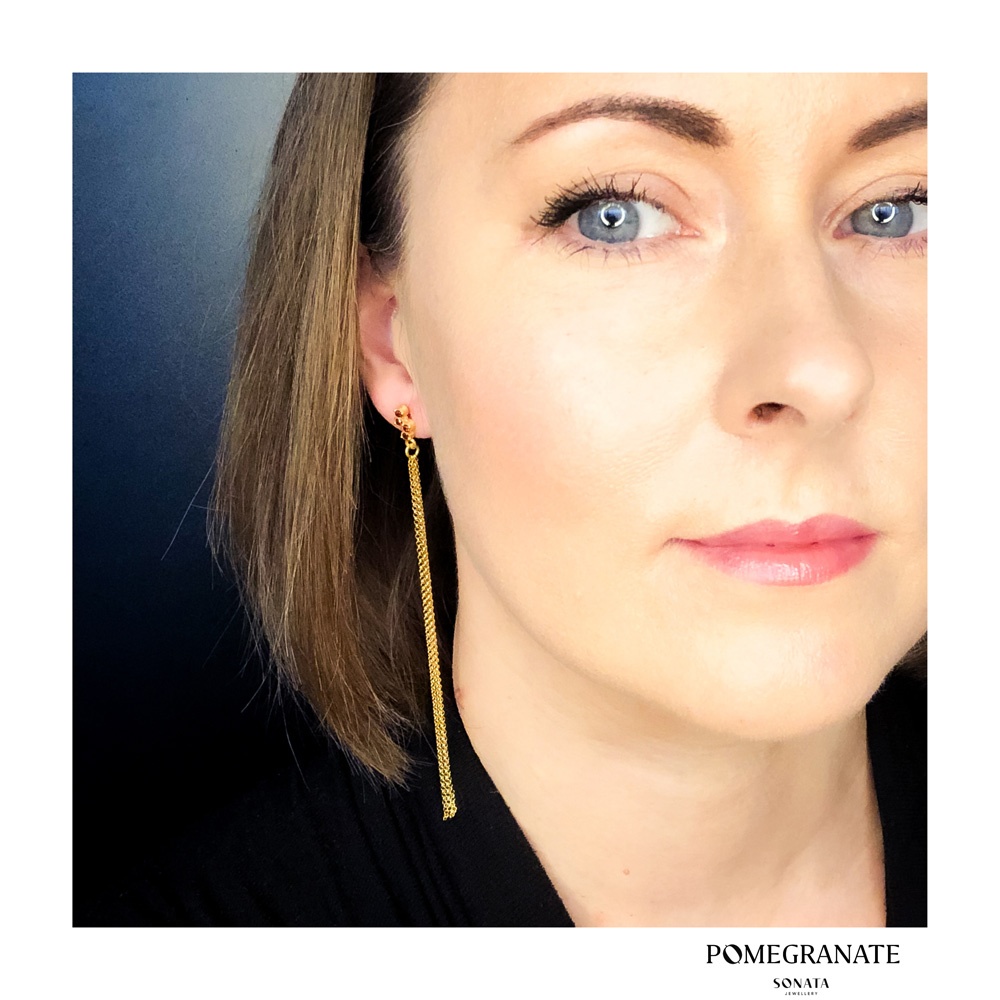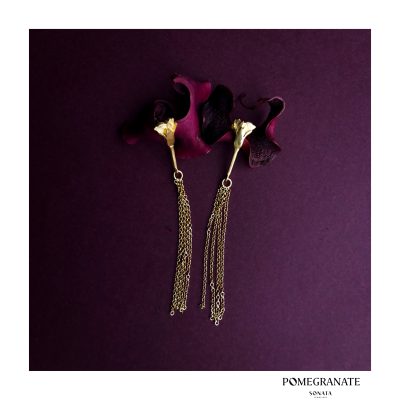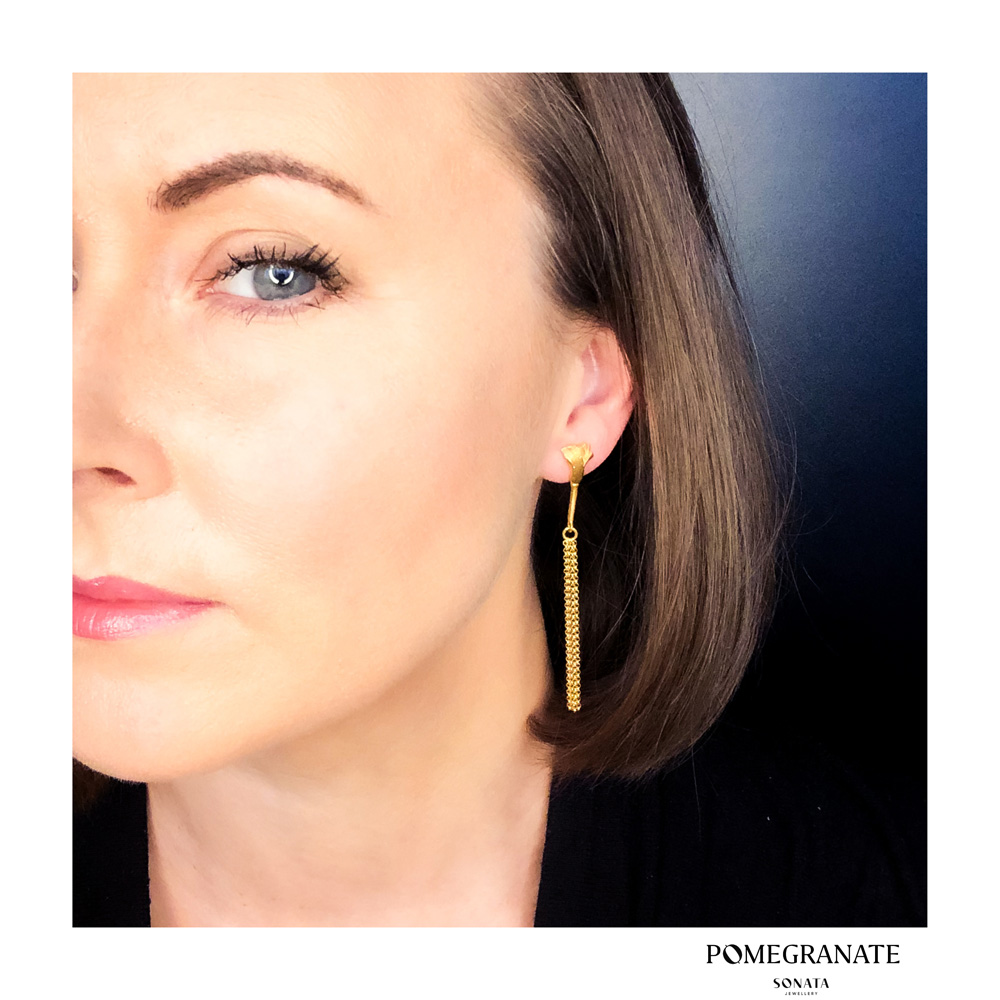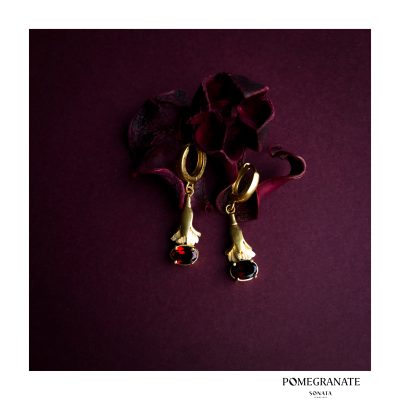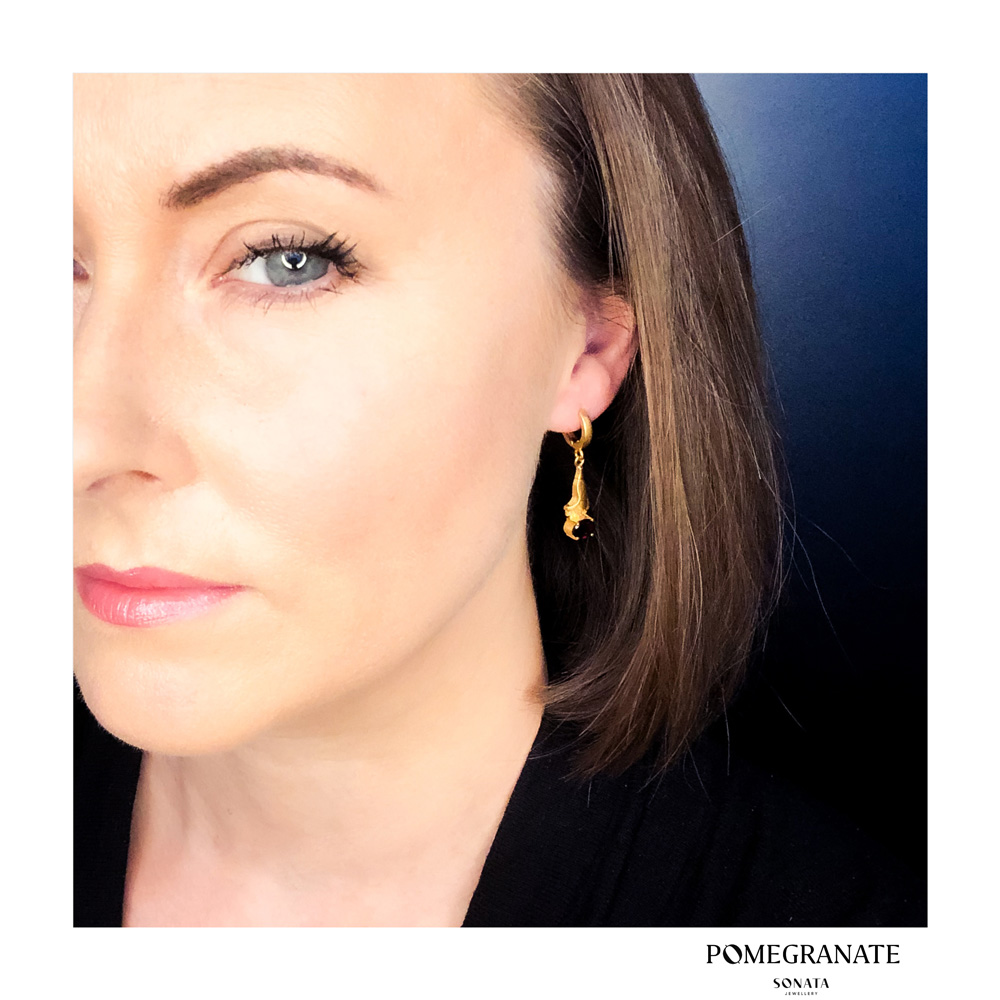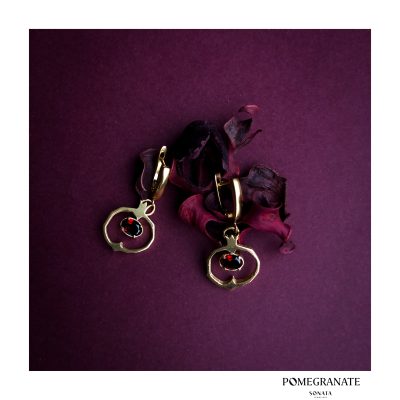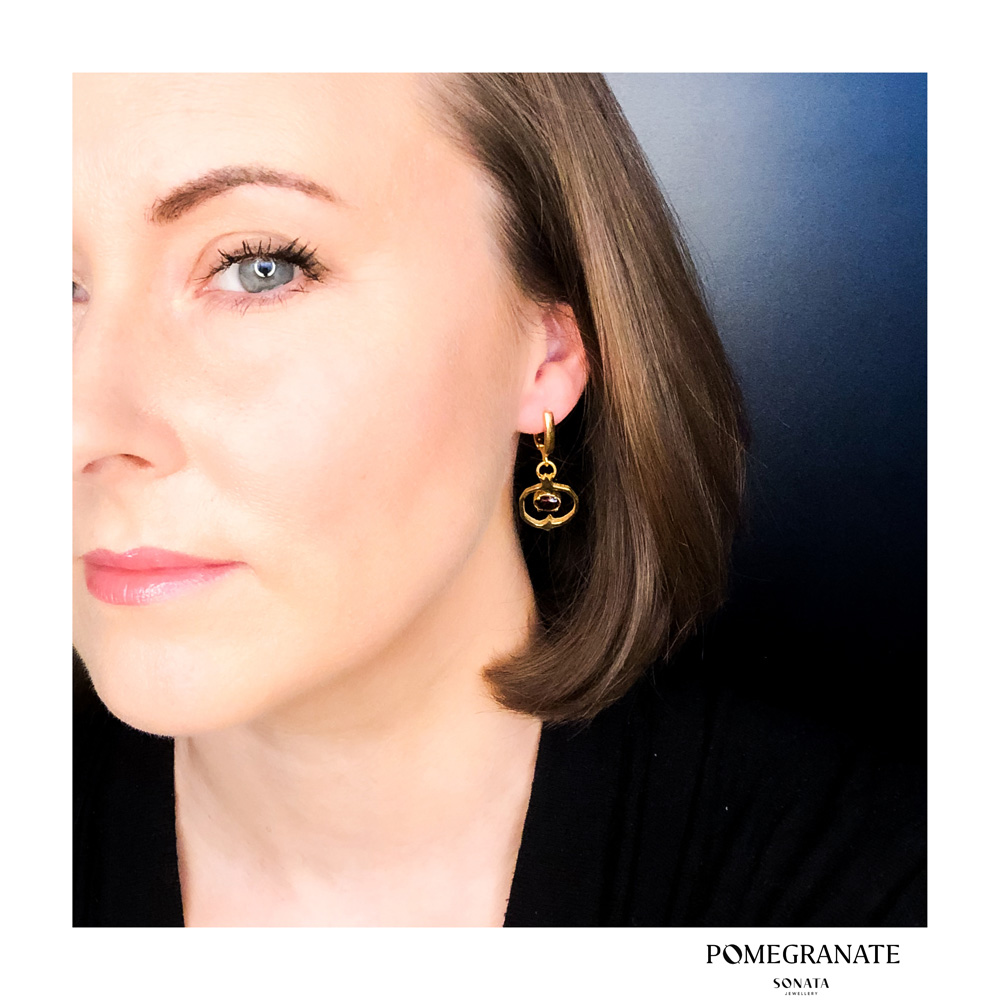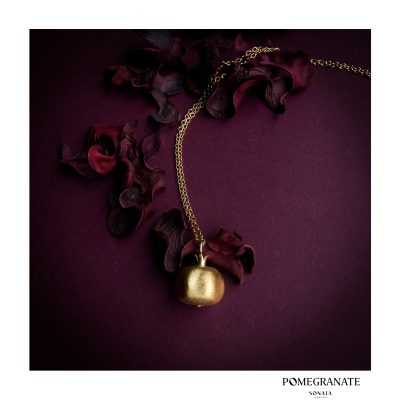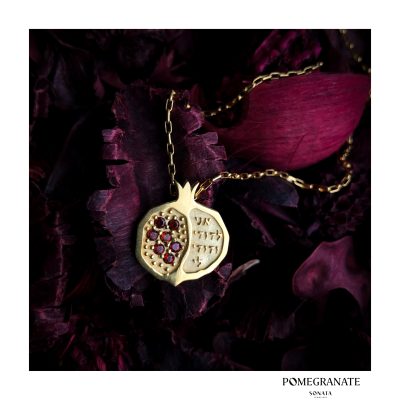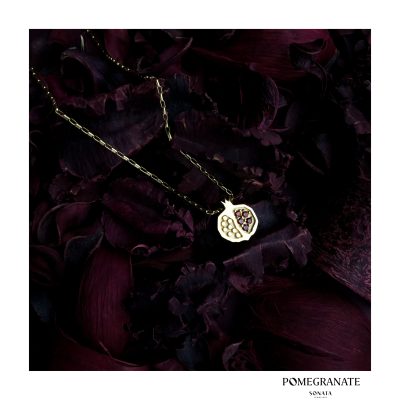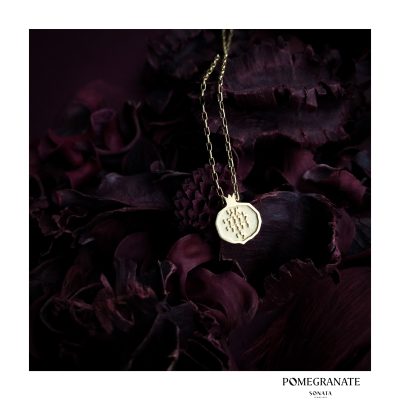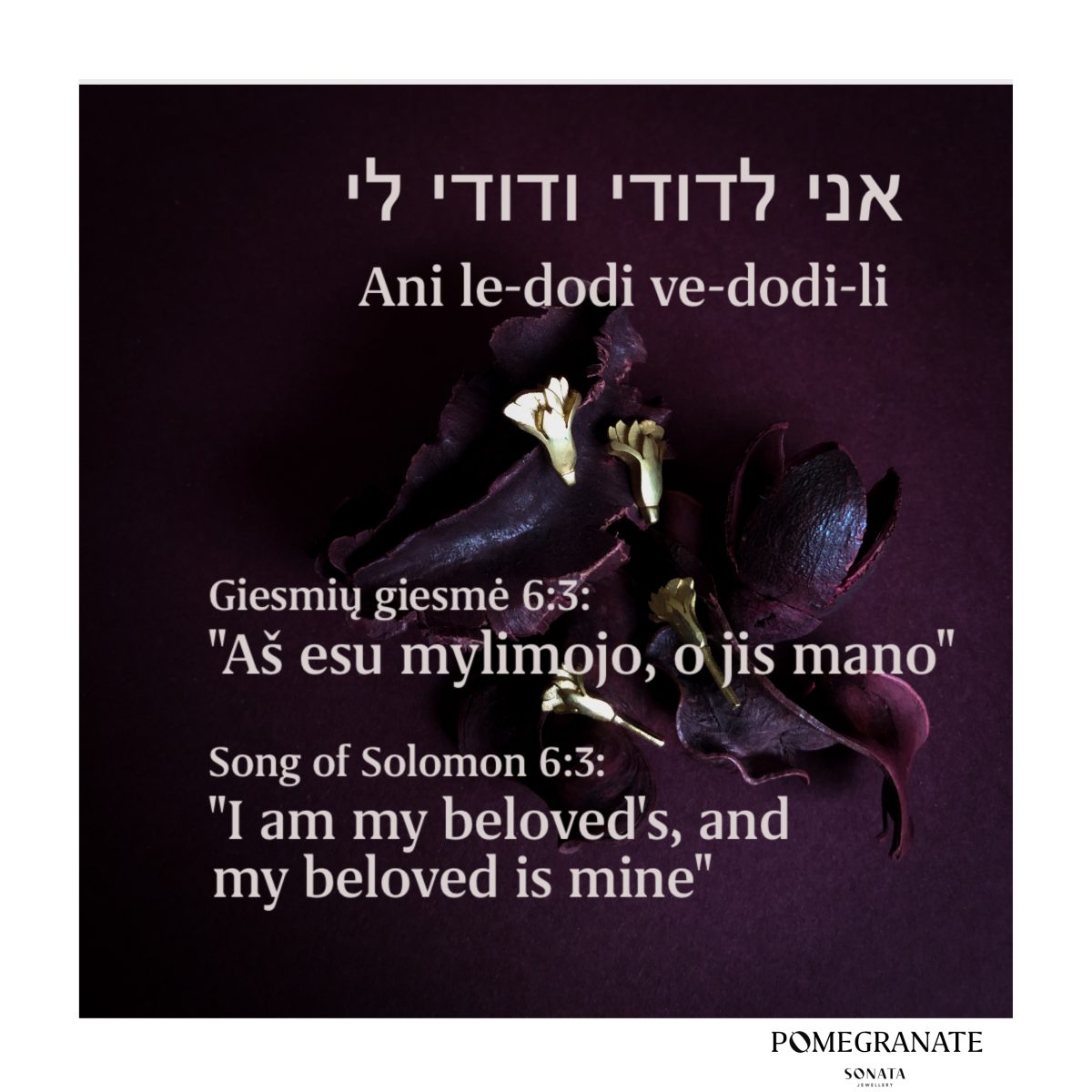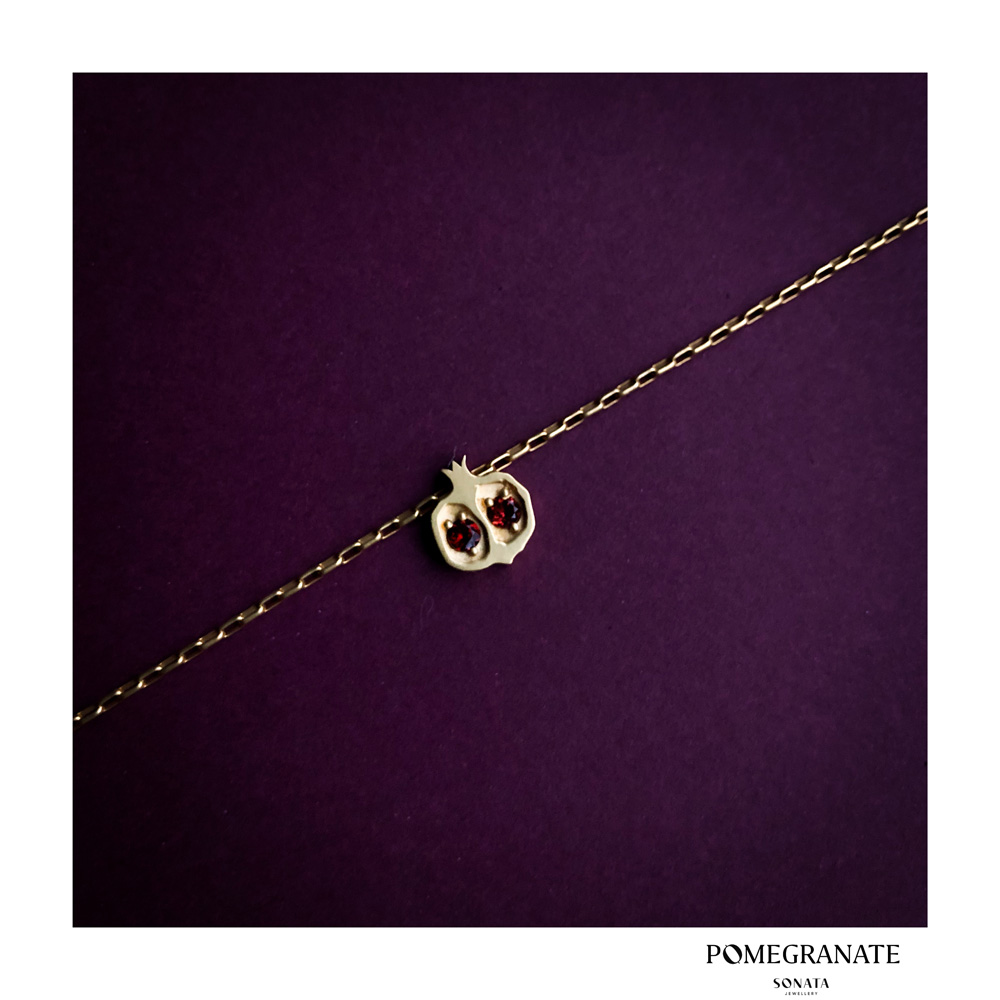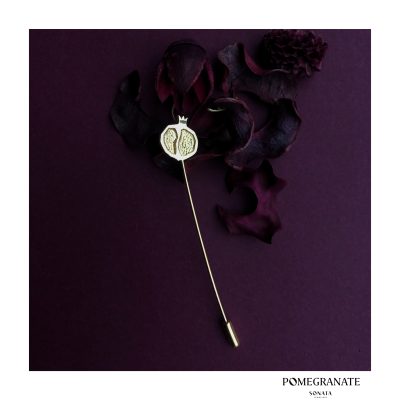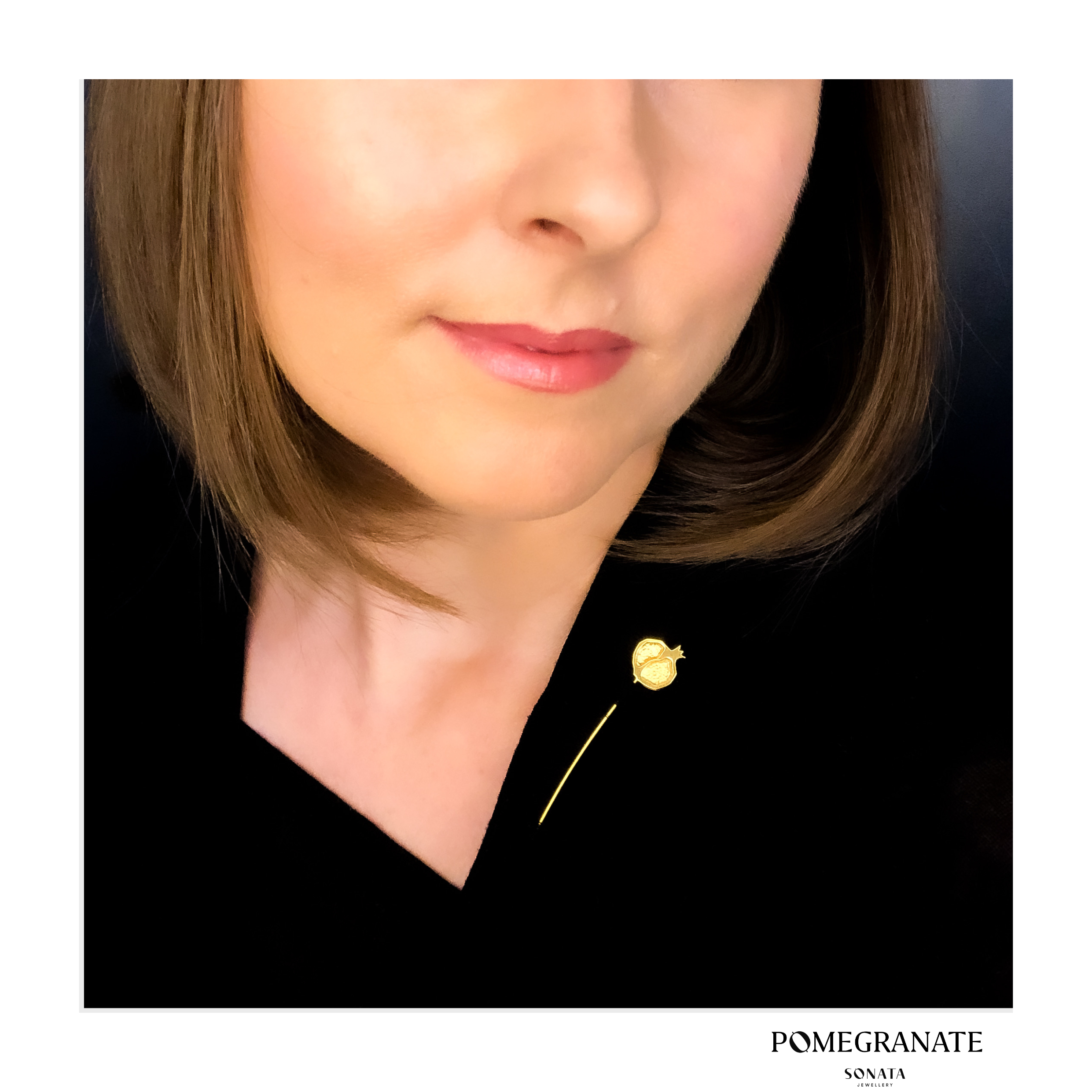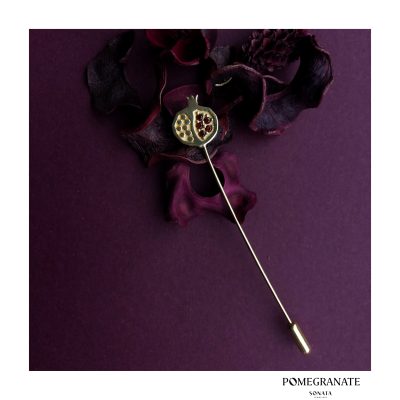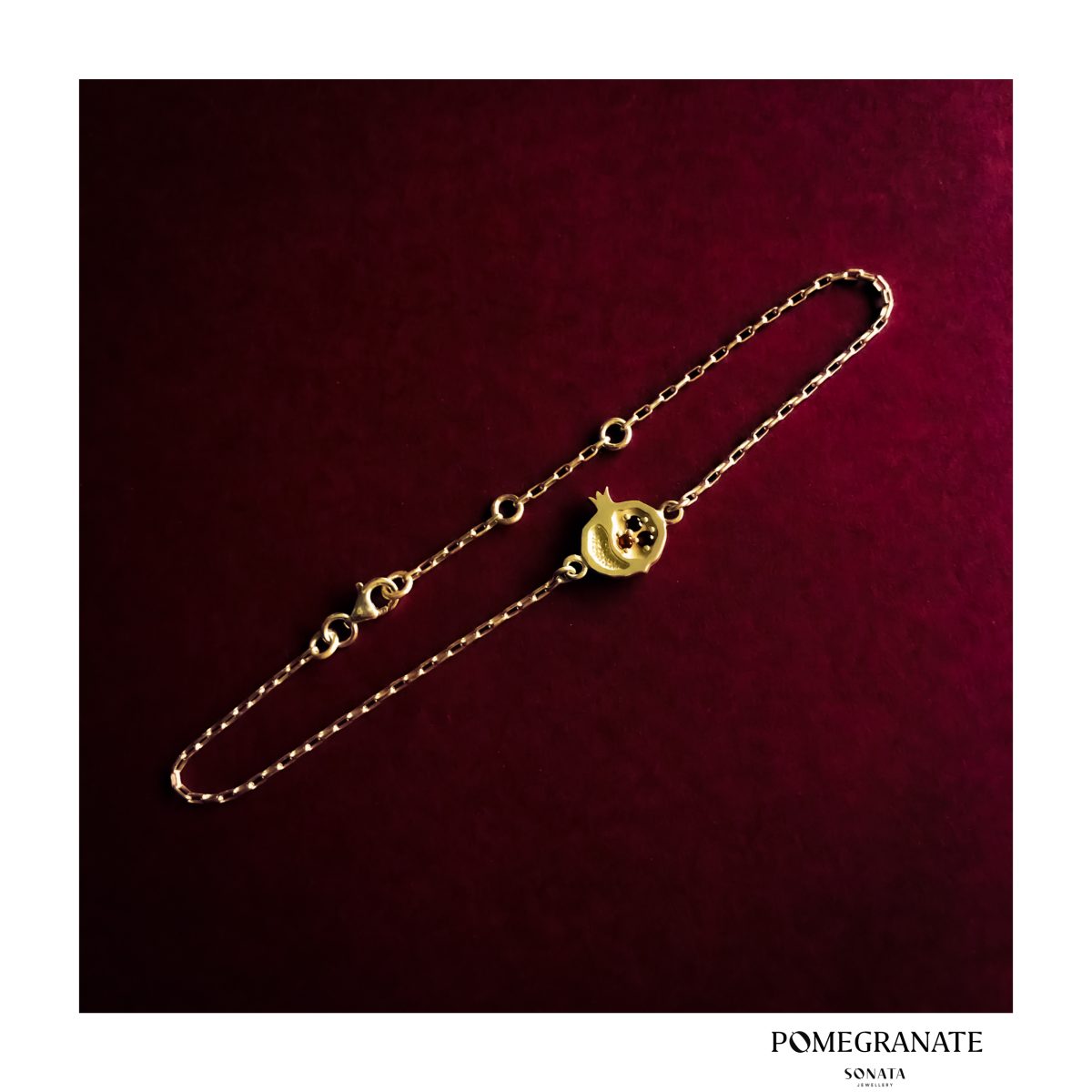The pomegranate fruit impresses with its excellent qualities, and I can easily recall it emotionally from memory. It is modest in shape, vivid with a warm color, and its interior reveals an abundance of small seeds. When recalling its taste, it is rich and memorable, valued for its healing properties. All of this aesthetic and emotional inspiration is reflected in the stylized versions of my jewelry. I seek pomegranate-like qualities in the volumetric shape, cuts, and fine details that reflect the seeds. To enhance the impact of the jewelry, I combine pomegranate stones with the warm color of gold metal. My creations are inspired not only by the form but also by the symbolism, which is particularly close to my heart.
In the Holy Scriptures, pomegranates are one of the seven species of plants native to the land of Israel (along with wheat, barley, grapes, figs, olives, and dates). Pomegranates are revered for the beauty of their bushes, flowers, and fruits, symbolizing blessing, holiness, fertility, and prosperity, or the wealth of the nation. Therefore, it is believed that the pomegranate symbolizes Israel. Additionally, the abundance of seeds is thought to represent the completeness and wisdom of the Torah (God’s word). It is also a traditional symbol of Hebrew New Year, Rosh Hashanah, representing abundance and fertility.
In the Song of Songs in the Holy Scriptures, the bride is described as a garden with pomegranate fruits, which speaks of her beauty. Her attitude of heart is reflected in the verse inscribed on the pendants:
Song of Songs 6:3:
“I am my beloved’s, and my beloved is mine.”
אני לדודי ודודי לי
Ani le-dodi ve-dodi-li “


